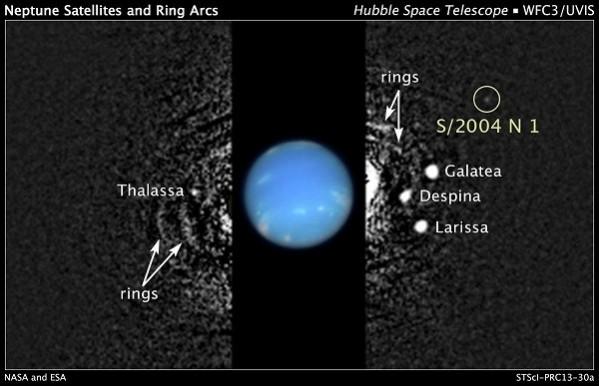NASA's Hubble Space Telescope has discovered a new moon orbiting around the gas giant Neptune.
The new moon, designated as S/2004 N 1, was found by Mark Showalter of the SETI Institute in Mountain View, California, on 1 July, while he was analyzing older pictures of Neptune taken by Hubble Space Telescope.
Showalter noticed an extra white dot while studying faint arcs (segments of rings) around Neptune. He tracked the movement of the white dot that appeared over and over again in more than 150 pictures taken by Hubble between 2004 and 2009. He found that the white dot is a new moon located about 105,251 km (65,400 miles) away from Neptune, between the orbits of the Neptunian moons Larissa and Proteus.
"The moons and arcs orbit very quickly, so we had to devise a way to follow their motion in order to bring out the details of the system," Showalter said in a statement.
"It's the same reason a sports photographer tracks a running athlete -- the athlete stays in focus, but the background blurs."
The new moon - S/2004 N 1 - is the 14th moon to orbit the planet Neptune. The other 13 moons of Neptune include Triton, Nereid, Naiad, Thalassa, Despina, Galatea, Larissa, Proteus, Halimede, Psamathe, Sao, Laomedeia and Neso.
The newly-discovered S/2004 N 1 moon appears to be the smallest moon measuring more than 19 km across (12-mile wide). It is 100 million times fainter than the faintest star visible to the naked eye.
The moon's size is very small that it even escaped detection by NASA's Voyager 2 spacecraft which took pictures during a brief flyby past Neptune in 1989 to survey the planet's moons and rings. After spotting it on the images taken by Hubble, Showalter plotted a circular orbit for the moon and found that it completes one revolution around Neptune every 23 hours.













